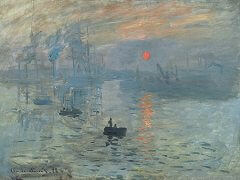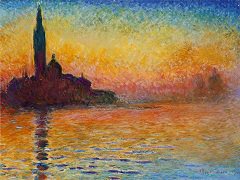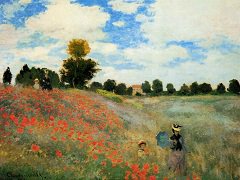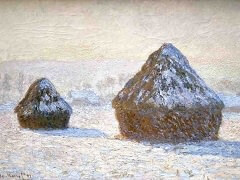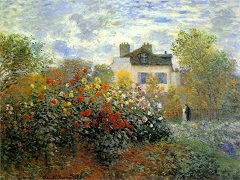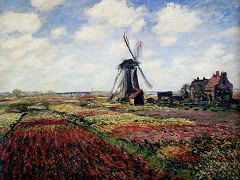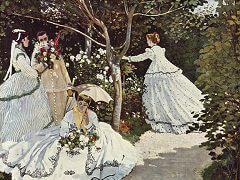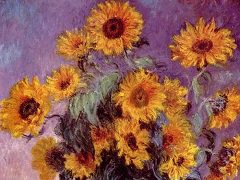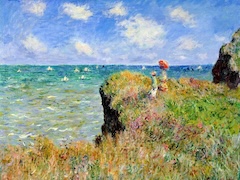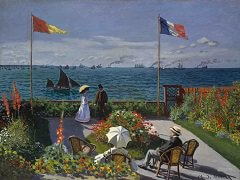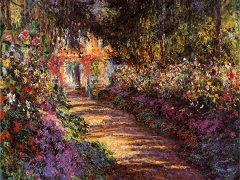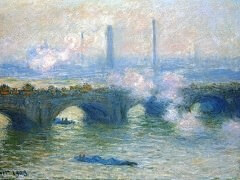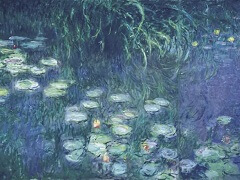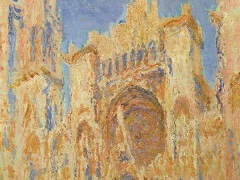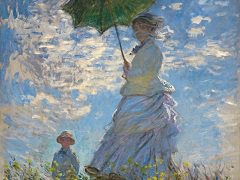A Cart on the Snowy Road at Honfleur, 1865 - by Claude Monet
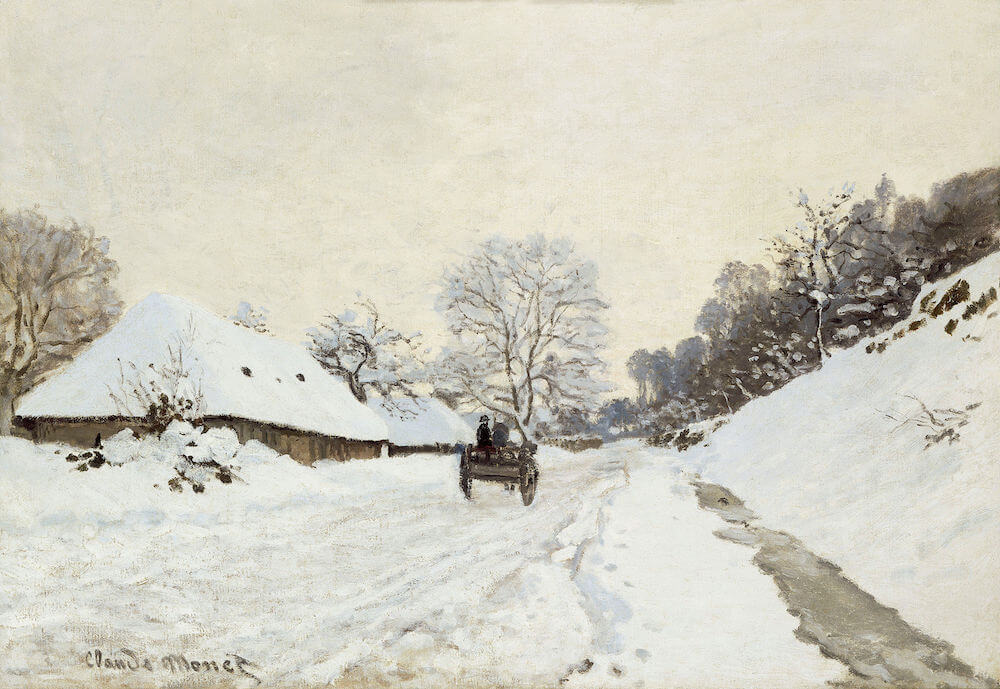
Although dated as 1867, this work was given a date of 1865 when it became housed in the Louvre in 1911. It is likely that the later date is, in fact, the correct one, or certainly more likely according to the local painter, Alexandre Dubourg. At the time, Monet, along with fellow artists, Courbet, Bazille, Boudin, and Jongkind, spent time at the Saint-Simeon farm where he worked on a number of snow-themed works. It was a quiet spot in Normandy frequented by all these artists in order to further their respective paintings. This particular work, of Honfleur, followed Courbet's snowscapes - where his typical motif was the stag and the hunter, Monet opted for a more deserted landscape. Here the cart, its driver, and the horseplay a minor role. It is the snow and the landscape that it envelops which is the dominant feature. Painting themes covered in the snow gave Monet another perspective with regard to light. The changes in color here are extremely subtle, yet they are vivid in their portrayal of the overall scene. It is a tranquil, everyday setting under a winter sky, while the ground, rooftops, and trees are covered in a picturesque and heavy covering of snow. Monet used a limited number of shades but has still captured the reflections, shadows, and light on his landscape. Monet was taken with the Normandy winter countryside and his snow pieces in the second half of the 1860s pay homage to this. This is an exquisite composition, carefully crafted with colors that "bleed" into one another while creating a beautiful work of Impressionism. Commentators cite that this particular work was greatly influenced by Japanese prints - they gave the effect of bright light reflecting off the snow as they were printed with translucent colored inks on light paper.
The painting is thought to be heavily influenced by the snowscapes of Japanese artist Katsushika Hokusai, such as Eijiri in the Province of Suruga. Aspects such as the single vanishing point and varied colors of snow can also trace their influences back to Japan.

